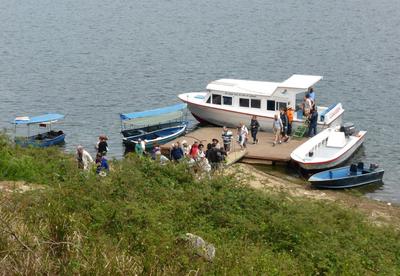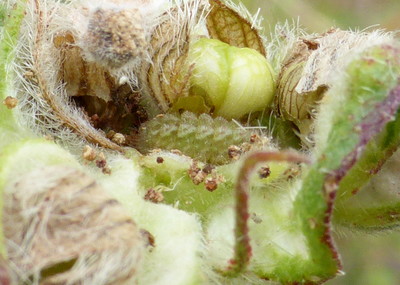|
I ran the moth lamp on the balcony last night but there were only a couple of moths as it was very windy. One is a Pyrausta but there are nine species in Cuba and I only know a few of them so far. The hotel lies in the Escambray mountains at the edge of a large reservoir called Lake Hanabanilla that has several 'arms' and islands. There are boat trips on the lake in a varied assortment of boats. We opted today for one of the smaller ones as it afforded better viewing and photographic opportunities, but with a covered awning. On the water were lots of American Coots, a few Lesser Scaup, and Least and Pied-billed Grebes. Osprey are very common here and we saw a single Snail Kite catching apple snails which are very abundant. We stopped for lunch at a small privately run restaurant on the opposite side of the lake after disturbing a Limpkin as we approached. These long-billed water birds are quite common here and, like the Snail Kites, feed mainly on the apple snails as well as other invertebrates. The eggs of White-angled Sulphur Anteos clorinde were quite common on Senna spectabilis laid distinctively on the edge of the leaves whereas those of Orange-barred Sulphur Phoebis philea and Orange-washed Sulphur P. avellaneda are laid on the young leaf tips. Doug found larvae of Common Long-tailed Skipper Urbanus proteus and Caribbean Skipper Pyrrhocalles antiqua. But best was finding several larvae of Limenia Scrub-Hairstreak Strymon limenia on Malachra sp. growing by the waters edge. The larvae had used silk to hold the flower buds closed and were feeding on the developing seed pods inside.
0 Comments
Leave a Reply. |
Welcome to our Blog
Here we will post interesting news about what we and others have seen in Cuba. Archives
July 2024
Categories |
























 RSS Feed
RSS Feed